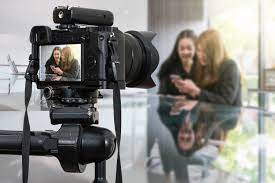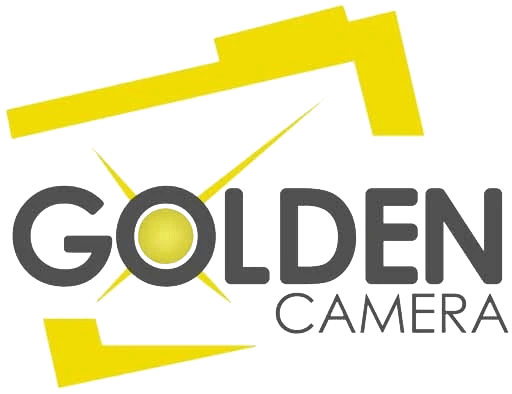- Camera
- Camera Lenses
- Camera Gimbals
- Camera Accessories
- Abs Flight Case
- Articulated Magic Arm
- Bag Case
- Batteries Power
- Blackmagic Accessories
- Camera Carry Strap
- Camera Dry Box
- Cleaning Kit
- Cups
- Dji Accessories
- Filters Accessories
- Flash Diffuser
- Gopro Accessories
- Insta360 Accessories
- Laptop Accessories
- Lens Hoods Caps
- Memory Cards
- Micro Photography
- Tripods Support
- Drone Camera
- Video Lights
- Lighting & Studio Accessories
- Pro Audio
- Studio Production
- Mobile Gimbal
- Gaming Consoles
- Apple Macbook
- Top Selling
How to Choose a Camera for Low Budget Filmmaking

Which video camera should you buy? It depends on your budget and the kind of film you’ll be making.
My choice of the best cameras for video in 2021
- A mirrorless camera or DSLR is the most affordable way to get into creative filmmaking.
- For news or events, a prosumer may be more manageable.
- Cinema cameras combine the best features of mirrorless cameras and pro camcorders, but they aren’t cheap.
- For work, travel, school or family use, choose an easy-to-use camera: a basic camcorder, iPhone, iPad or compact still camera.
- Use an action camera or Osmo Pocket camera/stabiliser for outdoor activities and sports.
- On a very tight budget, choose a basic camcorder or a used mirrorless camera or DSLR.
Creative filmmaking
You can choose between four main types of camera for serious low-budget filmmaking: mirrorless/DSLR, prosumer camcorders, pro camcorders, and cinema cameras. Each type has its pros and cons
Mirrorless cameras and DSLRs
Interchangeable lens cameras are mainly designed for serious still photography. But they’re the most affordable way to get into creative low-budget filmmaking.
They have big sensors and lenses compared to camcorders. So they’re better for low light and ‘cinematic’ shallow focus shots. Downsides? You may need accessories to get the best out of them, they’re slower to use than dedicated video cameras, and audio recording can be tricky. But recent mirrorless cameras like the Panasonic GH5 and the G85/G80 have image stabilisation and electronic viewfinders to make video shooting easier.
Professional camcorders
Cameras that have good manual controls, and professional audio inputs and outputs. They can record in pro video formats which are easier to adjust and correct than most video filmed with DSLRs and camcorders. They’re a good choice for news, events and corporate video.
Cinema Cameras

High-quality cameras like the Canon C100 take interchangeable lenses. Their large sensors let you get creative shallow focus effects, like DSLR/mirrorless cameras. But because they’re designed for video, not stills, they’re easier to film with. Most of them have better image quality, especially in low light. They can record in pro video formats that are easy to adjust and correct. Most of them can’t shoot stills.
The BlackMagic Pocket Cinema Camera 4K is the most affordable option for shooting high quality 4K RAW and ProRes files.
Easy-to-use cameras
These are the cameras to consider if you want something straightforward to use at work, in school, at home or for travel.
Consumer camcorders

Small camcorders are some of the most affordable and user-friendly options for shooting videos. They’re useful for beginners, schools and families, though image quality won’t be as good as SLRs or mirrorless cameras. I don’t recommend buying cheap (under $100) camcorders from makers you haven’t heard of.
Compact still cameras

Small ‘point-and-shoot’ still cameras have built-in zoom lenses. Most can shoot Full HD video, and some can record Ultra HD (4k). They’re convenient for travel and families. Video quality isn’t usually as good as DSLRs or mirrorless cameras, though top compacts come close.
Action cameras

These little cameras are tough, but you wouldn’t want to use one as your main camera. You can mount them on bikes, helmets, cars, your body, or even animals. Most of them don’t have screens. The more expensive ones let you monitor the image with a wireless monitor or an iPhone or Android app. You could also consider the DJI Pocket (below).
DJI Pocket 2

DJI Pocket 2 tiny combined camera and stabiliser is good for shooting action and events and for flowing, creative camera moves. It can shoot 4K at up to 60fps and Full HD at 240fps. It’s worth considering as an alternative to a basic camcorder, an action camera, or a phone/stabiliser combo.
Choosing a camera: what to look for
Ease of use
Is the camera comfortable to hold? Are the controls easy to use? Can you change the important settings with buttons and switches, or do you have to use menus? If there’s a touchscreen, does it work well? Does the camera have an accessory shoe so you can fit a microphone or light?
Manual control
Can you set exposure, white balance and sound levels yourself, or are they all automatic? These controls might not matter to you now, but you may need them if you get serious about your filmmaking.
Lens
How far does the camera zoom out (wide angle) and zoom in (telephoto)? The wide-angle setting is probably more important as it lets you get close and makes handholding easier. The best way to compare this is find out what the 35mm equivalent is: under 30mm is good, 25mm or less is great. It’s the optical zoom range you should ask about – digital zoom is irrelevant (see bottom).
If the zoom range isn’t very wide, does the manufacturer make wide-angle or telephoto adaptors to fit to the front of the lens?
How close can the camera focus? What’s the widest aperture? (A low number, like f/2 or f/1.7, lets more light in so you can use the camera in dark conditions or get shallow focus effects).
Sound
Is the built-in microphone good? Is there a headphone socket so you can listen to the sound while you film? Can you plug in an separate microphone? (If you want to be able to use pro microphones, you need a camera with three-pin XLR inputs).
Image stabilisation
Image stabilisation can make pictures less shaky. It’s not essential if you’re going to use a tripod or a good camera support, but it’s very useful for shooting handheld. The most effective stabilisation, featured in some new cameras like the Panasonic GH5, combines lens-based optical stabilisation and sensor-based in body image stabilisation (IBIS).
Sensor size
Larger is better – up to a point. The bigger sensors in HDSLRs, mirrorless cameras and large sensor video cameras are are usually better in low light, and let you get shallow focus effects. They also let you use smaller apertures without diffraction softening your image. But for news and events shooters, the greater depth of field you get from a small-sensor camera can be useful.
Mirrorless cameras and DSLRs come in three main sensor sizes: full frame, APS-C and Micro Fourth Thirds (MFT). MFT sensors are the smallest, which means the cameras and lenses are compact and convenient, but less good in low light. APS-C is around the same size as 35mm movie film frames: nice for shallow focus and low light than MFT.
‘Full frame’ cameras give the best low light performance (and ultra-shallow focus, if you need it). But they’re expensive and have bigger, heavier lenses: I don’t really recommend them unless you’re sure you need them.
Recording format
Check that the camera records in a format that your editing program can handle.
You only really need 1080p HD for most uses, but filming in 4K ‘ultra high definition’ has some advantages. 4K footage can look better even when downsized to 1080p, and it also gives you the option of cropping (eg from a mid shot to a closeup) when you edit.
Some cameras can record higher quality video like 10 bit and 4:2:2. These take up more space (and are more demanding on your computer) but they’re easier to correct and adjust when you edit.
Do you need to record broadcast quality footage? That usually means HD footage shot at a bit rate of at least 50Mb/s, with 4:2:2 chroma subsampling (that’s twice as much colour information as the 4:2:0 you get with many camcorders and SLRs). It also requires a minimum sensor size: 1 inch for a single chip, or 1/2 inch for three-chip cameras.
As always, you can ask any questions in the Comments section, below, and we will be more than happy to help you as you prepare for film school. Or contact our experts of Golden Camera team.
